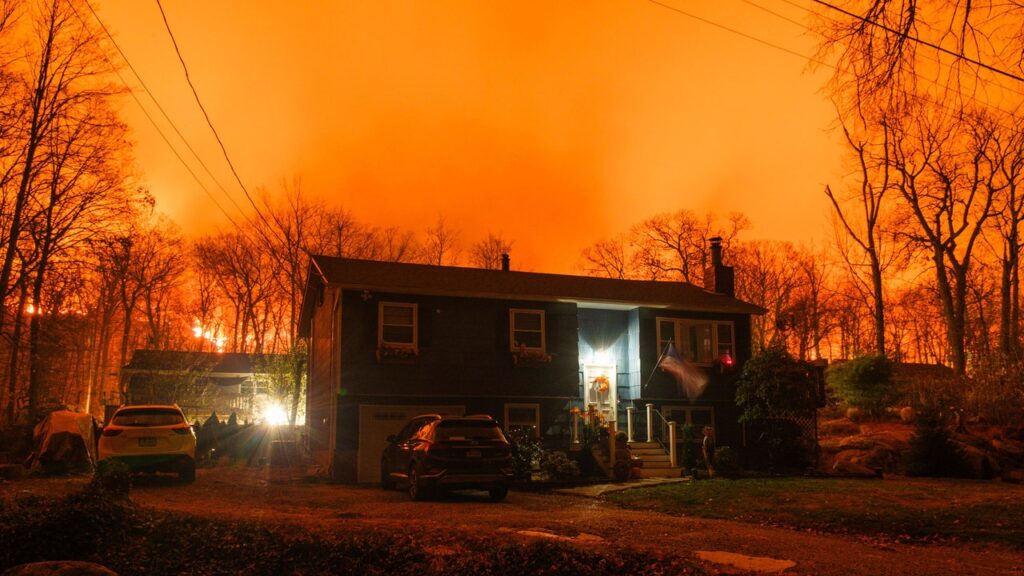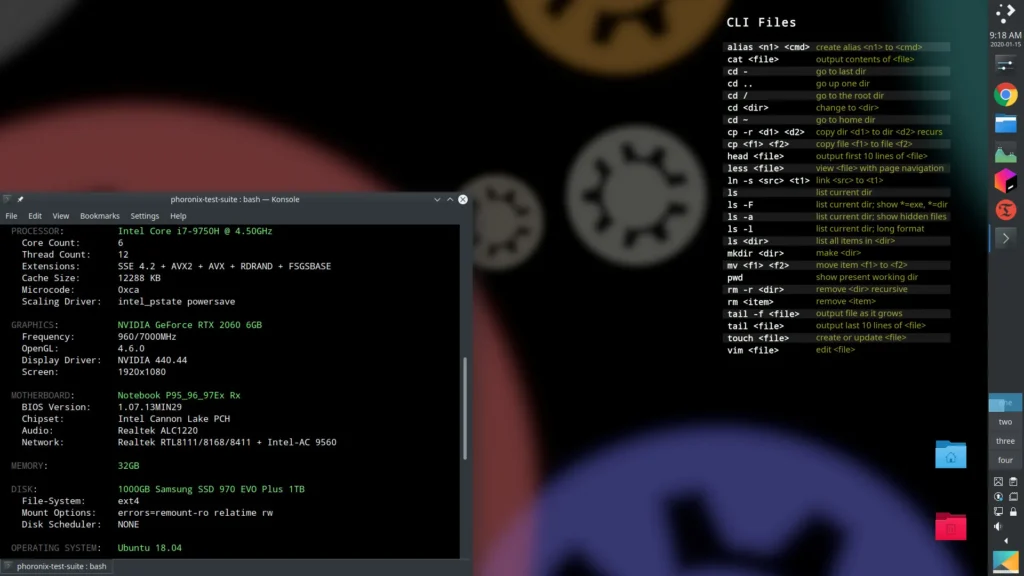Throughout the night of November 8th, my sleep was pierced by the smell of a burning forest. It is a familiar scent to me, something I associate with working as a wildland firefighter in California, New Mexico, and Arizona. In my dream state, I did not wonder why the smell of a wildfire was wafting through the window of my apartment on the south side of Prospect Park, Brooklyn. In the morning, I woke to a bizarre, upside-down world in which I was receiving messages about a forest fire in the middle of New York City. Even the preëminent historian of fire, Stephen Pyne, sent an e-mail from his home in Arizona with the subject heading “Fire in Brooklyn?!”
The Prospect Park fire started sometime in the evening in a sloped wooded area of the Ravine, which is known as Brooklyn’s only forest. The flames burned through the leaf litter and established in downed logs, illuminating the trees in an orange glow. Over the next few hours, it burned a hill bordered by a winding asphalt path; by 10 P.M., firefighters had fully contained it at a couple of acres.
I like to turn to the New York Post for thoughtful environmental reporting, and, after the fire, I read with interest that “scores of squirrels, birds, raccoons, skunks and other critters that call the Brooklyn oasis home were forced to flee the burned sector—and it could take years for them to return, according to wildlife experts.” A park official also warned that it would take “many seasons” for the forest to recover from the loss of “all” its ground cover.
I went to the park, hopped a fence, and trudged through crispy leaves until I reached a beautiful grove of towering sweet gums and red oaks. In places, the ground was gray and ashy. But, contrary to what the news coverage had suggested, I found plenty of acorns and leaves underfoot and only a few trees with burn marks. The flames had clearly been hottest in an area that looked like it had been a camp—someone’s Walden on the Dog Pond—and the spot was still littered with debris: charred cans and pots and crispy boots. Some of the oaks had the largest scorches at their bases. But oaks are a species that not only tolerates fire but flourishes from intermittent burning, which creates mineral-rich seed beds and an open, sun-drenched understory for regeneration. Some ecologists hypothesize that the reason oak species across the eastern United States have undergone a sixty-per-cent decline in density in recent decades is because of a lack of fire.
As I walked through the footprint of the burn, with birdsong floating above me and squirrels leaping on the ground feasting on acorns, I thought that, at worst, Brooklyn now had its own inadvertent experiment and study plot in fire ecology.
On the ground in Prospect Park the night of the fire was F.D.N.Y’s deputy commissioner of public information, James Long. Brush fires in autumn are not uncommon in New York City, according to Long. What is extraordinary is the number of them this year. In the first two weeks of November, the F.D.N.Y. responded to two hundred and seventy-one fires, the most in its history. The cause is a deeply weird drought that is currently gripping much of New York. “I don’t recall going through this long of a stretch without rain,” Long said.
For weeks now, more than ninety per cent of the Northeast has experienced abnormal dryness. In some places, such as New York and New Jersey, the deficit of rainfall is nine inches and soil moisture is ninety-five-per-cent below average. The result is that the Northeast has become extremely combustible. Typically, the region’s wildfire season is in April and May, but maps of recent fires in Maine, Pennsylvania, and Rhode Island resemble maps of California in August, with hundreds of red dots. The Associated Press reported that Massachusetts typically has around fifteen wildland fires each October; this October, there have been about two hundred. Last week, the biggest wildfire in the country was in California, but the second biggest was a fire outside Sundown, New York. So far this year, around a hundred and forty thousand acres have burned across the East—roughly double the amount at this time in 2023.
For thousands of years, before European settlement, the Northeast burned frequently. Native Americans intentionally set many of these fires; colonizers said that the “sweet perfume” of forest fires could be smelled at sea long before the land itself was visible. The historic memory of these fires, as well as the folk traditions of past generations who burned for agriculture, hunting, and wild foods, has nearly vanished. But this year is a reminder that fire is not something that only happens in other, faraway places. “Historically, for as long as we have records, fire was always around,” Stephen Pyne told me. “So it’s not that the Northeast doesn’t burn. It’s just that we’ve eliminated the conditions and now we may be restoring some of those conditions.”
According to Richard Seager, a climate scientist at Columbia University’s Lamont-Doherty Earth Observatory, the cause of the current drought is some random atmospheric variability: a high-pressure system over the central and eastern United States that is suppressing rainfall and refusing to budge. “If you look at precipitation records over the past century, it’s been getting wetter and wetter, particularly in October,” Seager said. “Then this one dry October appears as a stunning decline in precipitation amongst what has over all been a wetting trend.”
Seager has described wetting periods as “epic pluvial” events happening on top of climate change, which already promises to deliver more and more of them to the Northeast. One of Seager’s studies looked at tree rings to reconstruct four hundred and seventy-two years of moisture availability in New York, and it found that, in the past fifty years, the region has been undergoing a particularly epic pluvial event. But the tree rings also show droughts in the sixteenth and seventeenth centuries, and a severe drought in the nineteen-sixties. (1963 was a particularly tragic wildfire season in New Jersey.) The Earth’s atmosphere is complex enough that, every now and then, Seager explained, “something really strange is going to happen and there’s going to be a long sequence of dry weather.”
This is the strangeness we are currently living through, and it is revealing that, much like the West, the Northeast and its forty millions acres of forest has conditions that can create catastrophic fires. Forests are denser than they were a few decades ago and are susceptible to drought, disease, and destructive fires. There are millions of homes situated in the wildland-urban interface, areas where houses and flammable vegetation are in close proximity. (Indeed, from 1990 to 2010, the most U.S. homes in the wildland-urban interface were in the East.) And for more than a century the Northeast has practiced near-total fire suppression even in landscapes that might benefit from fire. Now, as Neil Pederson, a senior ecologist at Harvard Forest, in Massachusetts, told me, “we do have to get more used to fire. We have to think about fire more often.”
In other parts of the U.S., communities have already begun to reckon with fire and started using land-management techniques—selective thinning and prescribed fire—to the benefit of their landscapes. In this regard, some might be surprised to learn that New Jersey is far ahead of its neighbors. For each of the past two years, the state has burned some twenty thousand acres of forest, grasslands, and marsh. I have heard people call New Jersey one of the longest uninterrupted fire-lighting cultures in the country, beginning with Indigenous burning practices and stretching to today, with some private landowners and cranberry farmers burning to protect their watersheds..“We jealously protect our surrounding land, but to do that we have to manage it,” Stephen Lee III, a fifth-generation farmer whose family has stewarded the same land in the state’s Pinelands since 1868, told me. “Controlled burning is a part of that management and it has to be done somewhat regularly.”

